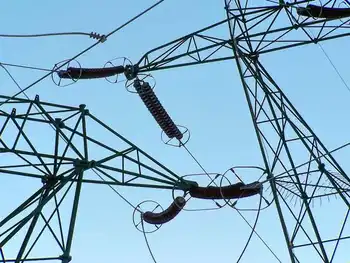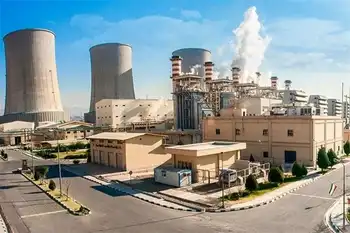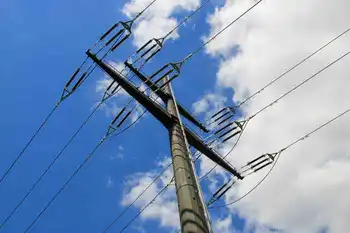8 nuclear reactors urged for Ontario
By The Toronto Star
Protective Relay Training - Basic
Our customized live online or in‑person group training can be delivered to your staff at your location.

- Live Online
- 12 hours Instructor-led
- Group Training Available
The proposal comes at a delicate time for nuclear energy in the province.
On one hand, a special task force is poised to report to Energy Minister Dwight Duncan about prospects for coping with Ontario's looming electricity shortage.
On the other, nuclear energy has just received a huge black eye, in the form of a harsh report by former federal energy minister Jake Epp on long delays and cost overruns in the billions in refurbishing the Pickering A nuclear station.
Epp's 19-page report was tabled Dec. 4.
Duncan has kept his options open, saying he hasn't ruled a nuclear future either in or out before receiving the report.
AECL, a federal crown agency, has already presented the broad outlines of its plan to the task force, senior vice-president Gary Kugler said in an interview.
"It's quite clear over the next 15 or 20 years there will be a major gap in the electricity supply," Kugler said.
And AECL's solution is an aggressive plan to build four pairs of new nuclear reactors, each pair churning out 1,400 megawatts of power, at an average cost of $2.7 billion a pair.
Kugler presents a grim mathematical portrait of Ontario's current power supply, which in theory can generate about 27,000 megawatts of power.
"It's quite clear over the next 15 or 20 years there will be a major gap in the electricity supply," Kugler said.
The new Liberal government's promise to close Ontario's coal-burning generating stations by 2007 will wipe out about 4,000 megawatts of capacity. In addition, all of Ontario's nuclear plants will reach the end of their natural lives by about 2020 if they're not refurbished.
If Ontario's consumption of power grows 1 per cent a year, and the coal and nuclear plants disappear, Ontario will have to build or massively overhaul 21,000 megawatts of generating capacity over the next 20 years, Kugler says. (Ontario's Independent Electricity Market Operator has sketched a similar picture.)
Refurbishing the existing nuclear plants will reclaim about 11,700 megawatts, he figures. More renewable generation such as wind turbines can fill some of the void, and so can natural gas-fired generators.
But in Kugler's view, it's not enough:
"That would still leave you with a gap of 5,500 megawatts, which we would propose to fill with new-build nuclear.
" AECL could build the same model of reactor that it recently completed in China and is currently building in Romania. They cost about $3.7 billion for a pair.
But the company is also seeking buyers of its new "advanced Candu reactor" or ACR, which Kugler says would be cheaper and faster to build, though it's still two or three years away from production.
The ACR is a departure from most AECL reactors, which use natural uranium as fuel. Natural uranium contains about 0.7 per cent U235, the uranium isotope that actually fires the nuclear reaction. The ACR uses enriched uranium, with about 2 per cent U235.
It would have to get its fuel from uranium enrichment plants or, more controversially, could burn uranium from nuclear warheads.
The bill is a big one.
Kugler figures the 700-megawatt plants should be built in pairs. If four pairs were built, the cost would average $2.7 billion per pair, or $10.8 billion in total. The purchaser — public or private — would have to provide the sites and servicing, at a cost of about $300 million per site, for a grand total of $12 billion, not including financing costs.
The ACRs are designed to produce electricity at a cost of 4.4 cents per kilowatt hour, Kugler said — less than the cost of natural-gas-fired plants or wind energy.
AECL would form a vendor group, secure financing and offer the units for sale at a firm price and a guaranteed schedule, Kugler said: "AECL and its vendor group would take substantial risks."
That would be a contrast from past practice, when Ontario Hydro, or latterly Ontario Power Generation, got stuck with the chronic cost overruns of its nuclear plants. On the other hand, AECL is still owned by taxpayers. Offering firm prices and guaranteed schedules is also what AECL will have to do to win contracts in the United States, where the company also hopes to win new business, Kugler said.
In Canada, AECL would be happy to do business either with a government-owned company such as Ontario Power Generation (OPG) or a private firm, Kugler said. Bruce Power, the private partnership that leases and operates the Bruce nuclear facility, has already signalled its interest in building new nuclear plants.
"We really do have to distinguish between the technology and the management of the technology," Kugler said. The report on Pickering A excoriated the project management, or lack of it, but didn't criticize the underlying technology.











